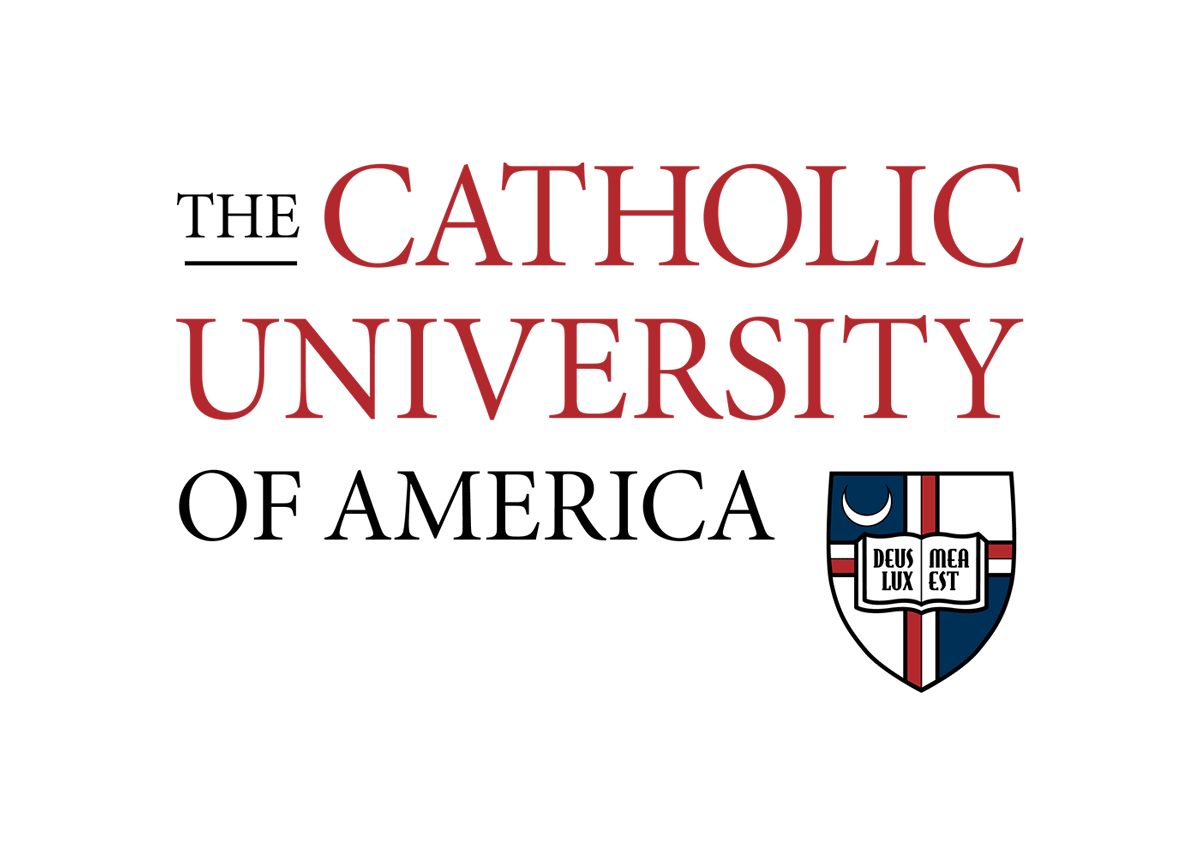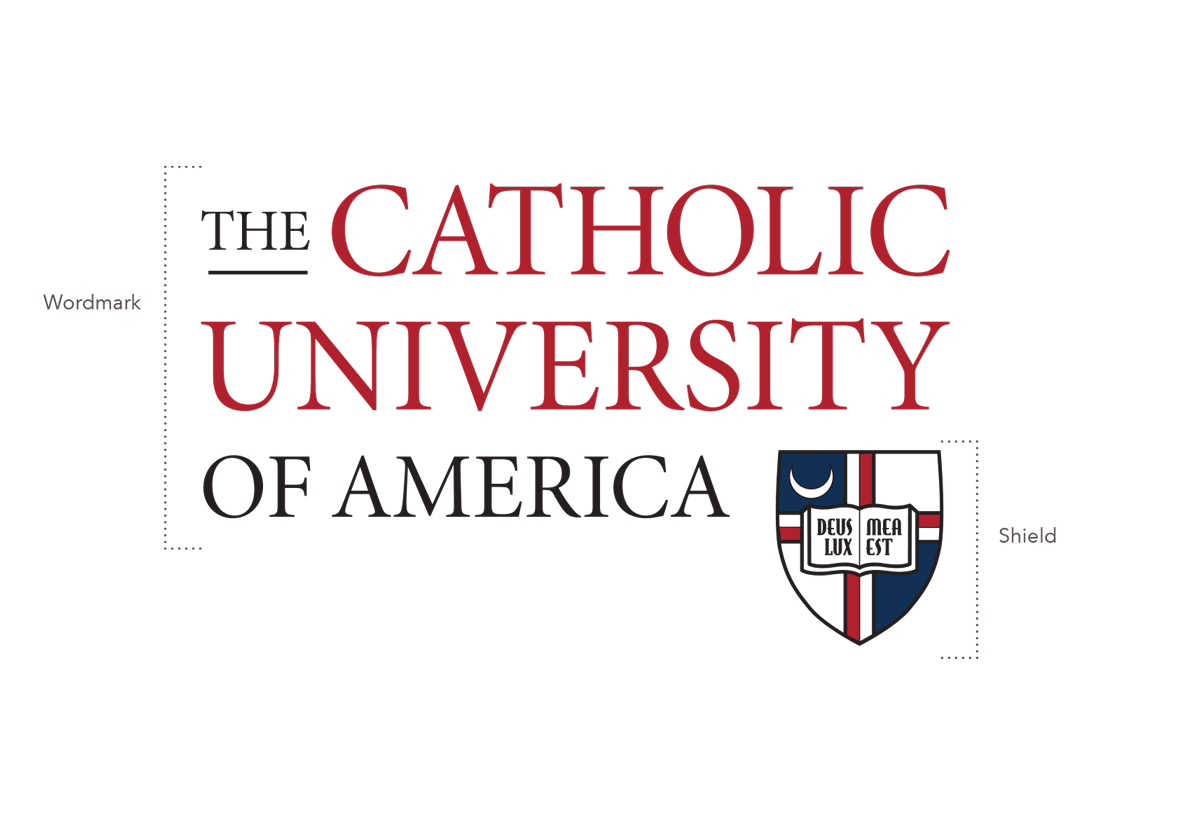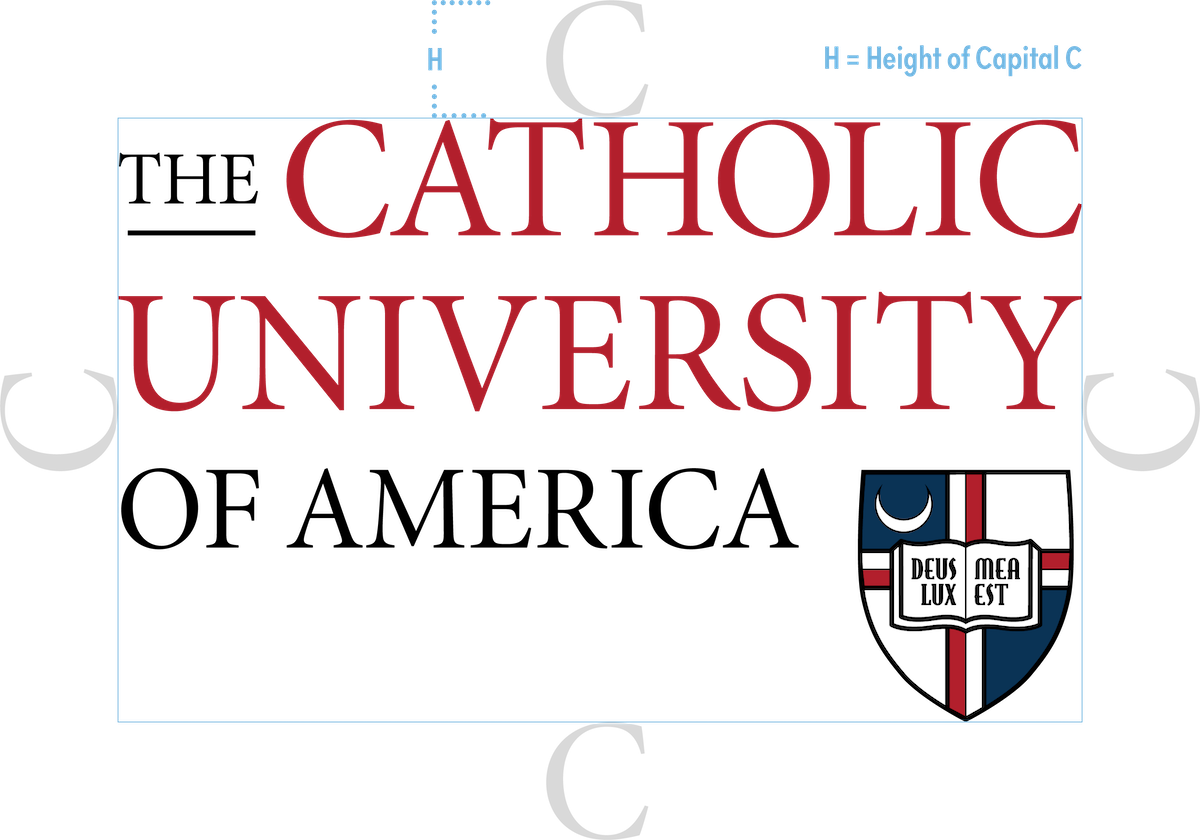

This document provides guidelines for using The Catholic University of America identity system, color palette, and typographic fonts, and how they should be properly applied across all mediums.
A new University brand guide has been created, providing the story behind the brand as well as University best practices for the use of various brand elements. For a copy of the brand guide, please contact the Office of Marketing and Communications at cua-creativeservices@cua.edu.

The Catholic University of America is unique among universities in the United States — even among Catholic universities. And it’s not just because we’re located minutes from the heart of the nation’s capital in Washington, D.C.
It is because we were specifically founded by the Catholic bishops of the United States, with a charter from Pope Leo XIII, to be the national university of the Catholic Church in America.
The Catholic University of America is a national research university with the comfortable feel of a nurturing educational community. Anchored by our Catholic identity and inspired by our rich intellectual tradition, the University welcomes undergraduate and graduate students from around the globe to study with world-class faculty at the forefront of their fields.

The quality and consistency of image and message will result in a positive impression of The Catholic University of America.
The Catholic University of America has developed a strategic, system-wide identity program. Our logo, fonts, colors, and other messaging must be used consistently, following the suggested guidelines in this manual.
All visual communications, such as websites, billboards, brochures, advertisements, business cards, digital campaigns, and letterhead, enable us to reach our worldwide audiences. It is through use of these communication tools that we are able to project an accurate, favorable, and consistent identity.
The Division of University Communications is responsible for maintaining the integrity of the master brand across the institution. This includes reviewing documentation that represents our name and brand on any and all mediums.
In order to best build on the University's name recognition and brand strength, the acronym “CUA” is not approved for print or electronic materials that are targeted to external audiences. We have created an exception for merchandise. "The Catholic University of America" or "Catholic University" should be used in all print and electronic references; "CatholicU" is appropriate for usage in social media (#CatholicU). “CUA” should not be used as the “handle” for any official Catholic University social media accounts. The Division of University Communications will assist with any changes to existing accounts.
Please do NOT copy or attempt to download any of the images on this page. The files used on this page may not be the correct size, style, or format for your intended purpose. They are posted here as samples to demonstrate the appropriate use of Catholic University logos.
Before downloading any logo files, please read the guidelines presented on this page. The link below will open a page where files of the various sizes, styles, and formats can be downloaded.
If you have any questions about how to use the files available for download, please contact the Office of Marketing and Communications at cua-creativeservices@cua.edu or by calling 202-319-5600.
The following basic elements should be a part of any Catholic University communication and will help to convey a tone, look, and feel that distinguishes and identifies it as part of The Catholic University of America brand family.

The Catholic University of America logo must be treated consistently and appropriately to maintain the integrity of the Catholic University brand.
The University logo is the primary institution-wide identifier of The Catholic University of America and should appear on all University communications. It must always be reproduced from the official Catholic University logo artwork files and must not be altered, re-created, or rearranged in any way.
Many design elements affect logo appearance, including color, size, placement, typography, and substrate. Properly applying these elements according to the guidelines set forth in this manual will:

The Catholic University of America logo consists of two components: the wordmark and the shield. The Catholic University logo should be shown in its entirety to include the wordmark and the shield. Exceptions are noted below.
The logo is a fixed composition of two parts:
The 3-color version of the logo, shown here, is the preferred format and should be used whenever possible.

The Catholic University of America logo is composed of two elements; the Catholic University wordmark and the Catholic University shield.
The diagrams shown here provide guidelines for establishing the minimum amount of clear space for print and digital reproductions. Graphics, typography, illustrations, and/or photographs should not be positioned within the perimeter of the clear space.
The same minimum distances should be used between the logo and the edges of the page.

Choosing the Correct Logo
The Catholic University of America logo is three colors, black, red (PMS 1805), and blue (PMS 540). If PMS 1805 and PMS 540 are not available, custom color equivalents have been developed to accommodate various publishing media. Please refer to the color palette section, below, for custom formulations of PMS 1805 and PMS 540.
The preferred logo is the 3-color version on a white background.
Secondary logo color options, 2-color black, 3-color reversed, 1-color black, and 1-color reversed, are shown below.
The Catholic University logo is never to be reproduced in any colors other than the options listed.



Recommended Size
The minimum size for the Catholic University logo is 1.25 inches (horizontally) on a typical 2.5” x 3” business card.
For digital applications, the suggested size for the logo is 230 x 145 pixels. Should there be limited space available, the minimum size for the logo in digital applications is 100 x 62 pixels.
Minimum Size
Minimum size refers to the smallest dimensions allowed for the Catholic University logo.

Changing the Catholic University logo in any way will weaken its impact and detract from the consistent image we want to project. These examples demonstrate some of the more common misunderstandings and misdirected logo use violations.
Use the files provided. Do not recreate or alter the logo colors. No new designs that differ from the approved primary and secondary logos should be created. See instructions below for secondary logo usage.
It is not permitted to use the University’s shield without the wordmark. However, if size does not permit the use of the entire wordmark, please contact the Office of Marketing and Communications for permission to use the shield only format and for the appropriate file.
Student Organizations
Registered student organizations should refrain from using the name of The Catholic University of America, its symbols, logos, or other University likeness without permission from the Office of Marketing and Communications.

The Catholic University of America logo is also available in a horizontal format. However, the preferred Catholic University logo, shown above, should be used whenever possible.
Usage
The Catholic University horizontal logo may appear in instances where the full Catholic University logo is deemed too large. Some examples of applications where it may be appropriate to use the horizontal logo include:
All other desired usage of the horizontal logo must be approved by the Office of Marketing and Communications.

Secondary University logos are for use by schools, divisions, departments, and offices. They are acceptable in three standard layouts — 2-element horizontal, 1-element horizontal, and vertical (as shown).
External agencies are not permitted to create secondary University logos. If you need a secondary logo to be created, please contact the Office of Marketing and Communications at cua-creativeservices@cua.edu.
2-Line Horizontal Logo
This logo format can be used with a school/division AND/OR department/office listing.
1-Line Horizontal Logo
This logo format should only be paired with a school/division OR department/office listing. A school/division AND department/office listing under this logo is not permitted.
Vertical Logo
This logo format should only be paired with a school/division OR department/office listing. A school/division AND department/office listing under this logo is not permitted.
Secondary logos are permitted on e-newsletters and in headers of email blasts. They can also be used on giveaway items, staff apparel/t-shirts, banners, and inward-facing or sponsored event publications. It is also permissible to use a secondary logo in media advertising. Secondary logos should NOT be used on stationery, business cards, websites, or publication covers and other outward facing collateral materials. In these cases the general University logo should be used and can be downloaded at https://www.catholic.edu/

The Catholic University of America shield, or coat of arms, was designed by Pierre de Chaignon la Rose in 1935 and emphasizes three things: our country, our faith and our university.
The cross comprises red and white stripes on a field quarter of blue and white, composed of our three national colors and no others. Added to this consideration, the crescent is the heraldic symbol of the Immaculate Conception, constituted by ecclesiastical authority as the Patroness of the United States of America.
The most salient charge of the shield is a cross, clearly indicative of the Catholic faith. The stripes of red are emblematic of the Precious Blood of Christ, while the white stripes symbolize the innocence of Christ. The quartered field of blue and white uses the heraldic colors of Our Lady, the Mother of God.
The open book represents Catholic University as an institution of learning. The motto on the pages of the book, “Deus Lux Mea Est” (God is my light), points to the source of all truth and enlightenment.
Request for usage of the shield only may be requested by emailing cua-creativeservices@cua.edu.

This diagram provides guidelines for establishing the minimum amount of clear space. Graphics, typography, illustrations, and/ or photographs should not be positioned within the perimeter of the clear space.
The same minimum distances should be used between the shield and the edges of the page.
Usage
The Catholic University shield may appear alone in instances where the full Catholic University logo is deemed too large. Some examples of applications where it may be appropriate to drop the Catholic University wordmark and use only the shield include:
All other desired usage of the shield without the wordmark must be approved by the Office of Marketing and Communications.

Use this naming convention guide to select the appropriate logo for reproduction. The following file types are available for download at the Files for Download site associated with this page.
EPS
These files can be imported into or opened through page layout and illustration software such as InDesign, QuarkXPress, Illustrator, or Photoshop. Since EPS files are vector art, they offer the highest possible resolution and should be used for high-quality print applications and posters or large-scale graphics.
JPG
These images can be placed in applications such as Microsoft Word, Publisher, and PowerPoint, Google Docs, or on websites and social media. The .JPG format is preferred for photographs. It uses a compression algorithm that can reduce large images to very small file sizes, which is well suited for websites and social media. Since .JPG images are bit-map files, they can lose resolution when used at larger sizes and are not able to display with transparent backgrounds in all applications.
PNG
The .PNG format is preferred for posting created images and graphics on websites, apps, and social media. It uses a compression algorithm that reduces file size while retaining sharp lines and solid colors. It results in a slightly larger file size than the .JPG format. Graphic images in the .PNG format can be saved with transparent backgrounds so they blend in with the background color of the website or other digital application in which they appear.
Identity Standards – Section Two >>
Color Palette | Typography
Identity Standards – Section Three >>
Presidential Seal | Athletics | Stationery | Email | Social Media